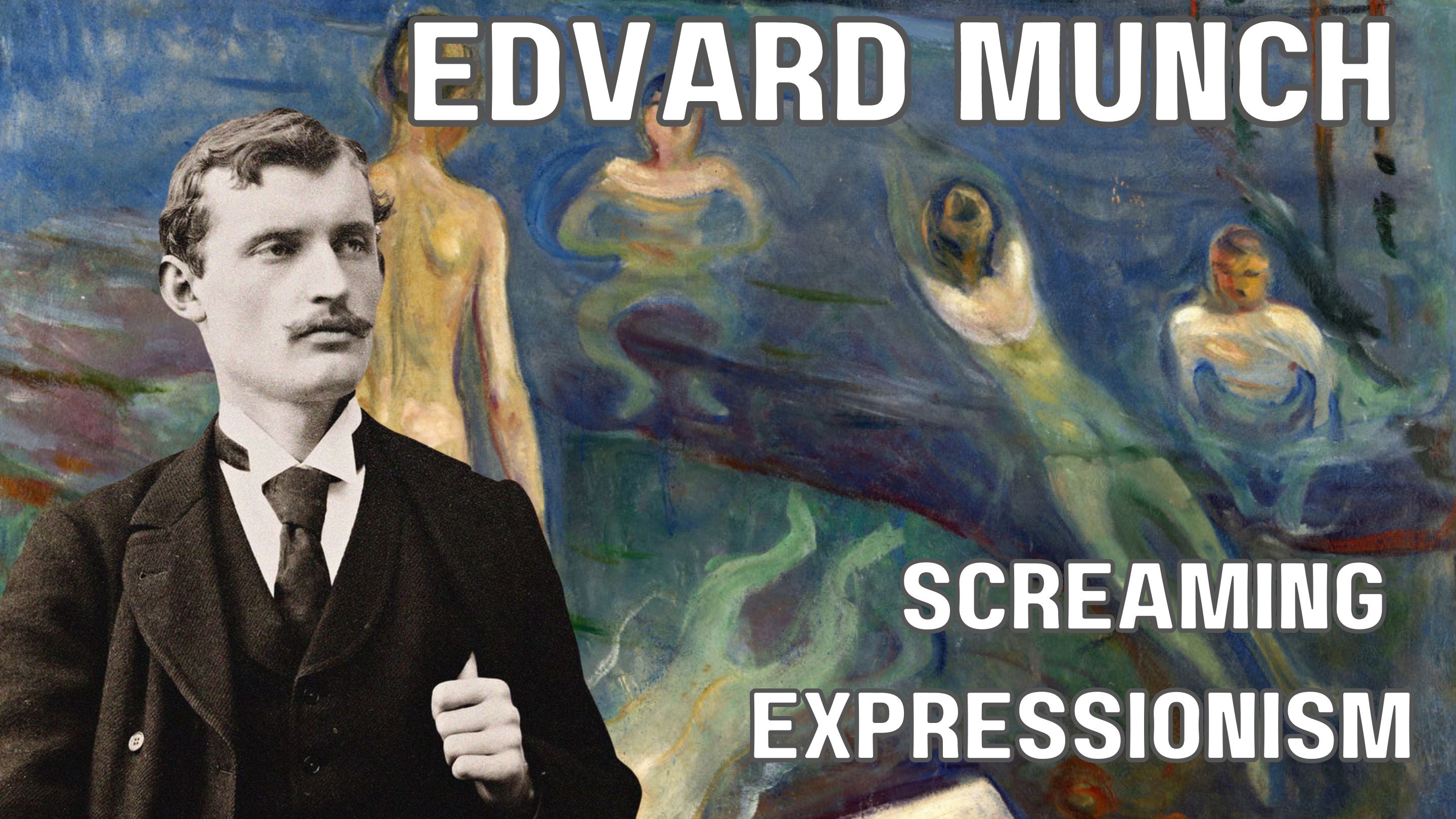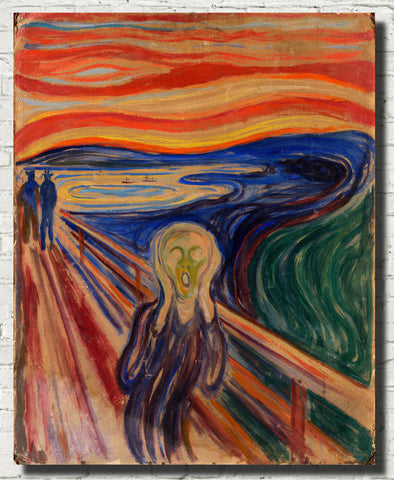Edvard Munch, a name synonymous with emotion, turmoil, and profound artistic expression, remains one of the most revered figures in the world of art. From the haunting visage of "The Scream" to the introspective depths of "The Sick Child," Munch's work delves into the human psyche with unparalleled intensity. In this blog post, we embark on a journey through the life, influences, and legacy of this iconic Norwegian painter.
Exploring Munch's Life and Influences
Born on December 12, 1863, in Ådalsbruk, Norway, Munch's early years were marked by tragedy and turmoil. The specter of illness and death loomed large over his childhood, compounded by the loss of his mother and beloved sister to tuberculosis. Raised in an environment steeped in religious fervor and morbidity, Munch found solace and expression through art.
The Crucible of Expressionism and Symbolism
Munch's artistic journey was shaped by encounters with a diverse array of influences. From the nihilistic ethos of Hans Jæger to the vibrant colors of Paul Gauguin and Vincent van Gogh, Munch synthesized disparate elements into a style uniquely his own. His exploration of emotional and psychological states, often referred to as 'soul painting,' gave rise to works that resonate with audiences to this day.
The Evolution of a Style
Munch's early experimentation with Impressionism and Naturalism eventually gave way to a more introspective and symbolic approach. His brushstrokes became imbued with raw emotion, capturing the existential angst and despair that pervaded his own psyche. From the somber hues of "Melancholy" to the frenetic energy of "The Scream," each painting serves as a window into Munch's inner world.
The Scream: A Symbol of Modern Anxiety
No discussion of Edvard Munch would be complete without mention of his magnum opus, "The Scream." Conceived during a moment of profound existential dread, the painting transcends its creator to become a universal symbol of modern anxiety. With its distorted figures and tumultuous colors, "The Scream" encapsulates the tumultuous spirit of the fin de siècle era.
Legacy and Influence
Despite facing initial controversy and rejection, Munch's legacy endures as a testament to the power of artistic vision. His influence can be seen in the works of subsequent generations of artists, from the Expressionists of the early 20th century to contemporary creators grappling with themes of alienation and despair.
Conclusion: A Portrait of the Artist as a Tormented Soul
In the annals of art history, few figures loom as large as Edvard Munch. His paintings serve as windows into the human condition, capturing the raw essence of emotion with unparalleled clarity. As we trace the contours of his life and work, we are reminded of the enduring power of art to illuminate the darkest recesses of the soul.
Edvard Munch FAQ's
-
Who was Edvard Munch?
- Edvard Munch was a Norwegian painter born on December 12, 1863, known for his emotionally charged and psychologically introspective works.
-
What is Edvard Munch most famous for?
- Munch is most famous for his painting "The Scream," which has become an iconic symbol of existential angst and modern anxiety.
-
What style of art did Edvard Munch paint?
- Munch's style evolved over time but is often associated with Expressionism and Symbolism. He was known for his use of bold colors, distorted figures, and intense emotional themes.
-
What influenced Edvard Munch's art?
- Munch was influenced by a variety of factors, including his tumultuous childhood, encounters with other artists such as Paul Gauguin and Vincent van Gogh, and his own struggles with mental health.
-
Did Edvard Munch have mental health issues?
- Yes, Munch experienced severe mental health difficulties throughout his life, including bouts of depression and anxiety. He is believed to have had borderline personality disorder.
-
How did Edvard Munch's upbringing influence his art?
- Munch's upbringing, marked by illness, death, and religious fervor, had a profound impact on his art. Themes of death, existential dread, and the human condition often feature prominently in his work.
-
What are some of Edvard Munch's other famous works besides "The Scream"?
- In addition to "The Scream," Munch's notable works include "The Sick Child," "Madonna," "The Dance of Life," and "The Frieze of Life" series.
-
Where can I see Edvard Munch's paintings?
- Many of Munch's paintings are housed in museums and galleries around the world. The Munch Museum in Oslo, Norway, and the National Gallery in Oslo are notable institutions showcasing his work.
-
Did Edvard Munch ever marry?
- Munch never married, although he briefly considered marriage at one point. His emotional instability and struggles with relationships are reflected in his art.
-
What is the significance of Edvard Munch's art in the context of art history?
- Edvard Munch's art is significant for its pioneering exploration of psychological themes and its influence on subsequent generations of artists. His ability to capture raw emotion and existential angst continues to resonate with audiences today.
Edvard Munch Prints
Prints and ready to hang canvas panels of Edvard Munch's paintings are available in a range of sizes with fast worldwide delivery.





